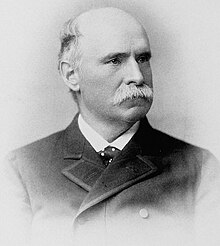
Drexel University is a private research university with its main campus in Philadelphia, Pennsylvania. Drexel's undergraduate school was founded in 1891 by Anthony J. Drexel, a financier and philanthropist. Founded as Drexel Institute of Art, Science and Industry, it was renamed Drexel Institute of Technology in 1936, before assuming its current name in 1970. As of 2020, more than 24,000 students were enrolled in over 70 undergraduate programs and more than 100 master's, doctoral, and professional programs at the university.

The University of Rochester is a private research university in Rochester, New York, United States. It enrolls approximately 6,800 undergraduates and 5,000 graduate students. It was founded in 1850 and moved into its current campus, next to the Genesee River in 1955. With approximately 30,000 full-time employees, the university is the largest private employer in Upstate New York and the 7th largest in all of New York State.

Old Dominion University (ODU) is a public research university in Norfolk, Virginia. Established in 1930 as the Norfolk Division of the College of William and Mary, an extension school of the College of William & Mary for working professionals, members of the military, and non-traditional students in Norfolk-Virginia Beach area of the Hampton Roads region. The university has since expanded into a residential college for traditional students and is one of the largest universities in Virginia with an enrollment of 23,494 students for the 2023 academic year. The university also enrolls over 600 international students from 99 countries. Its main campus covers 250 acres (1.0 km2) straddling the city neighborhoods of Larchmont, Highland Park, and Lambert's Point, approximately five miles (8.0 km) north of Downtown Norfolk along the Elizabeth River.

Constantine Papadakis was a Greek-American businessman and the president of Drexel University.

The University of Winnipeg is a public research university in Winnipeg, Manitoba, Canada. It offers undergraduate programs in art, business, economics, education, science and applied health as well as graduate programs. UWinnipeg's founding colleges were Manitoba College and Wesley College, which merged to form United College in 1938. The University of Winnipeg was established in 1967 when United College received its charter.

Dillard University is a private, historically black university in New Orleans, Louisiana. Founded in 1930 and incorporating earlier institutions founded as early as 1869 after the American Civil War, it is affiliated with the United Church of Christ and the United Methodist Church.

Xavier University of Louisiana (XULA) is a private, historically black (HBCU), Catholic university in New Orleans, Louisiana. It is the only Catholic HBCU and, upon the canonization of Katharine Drexel in 2000, became the first Catholic university founded by a saint.
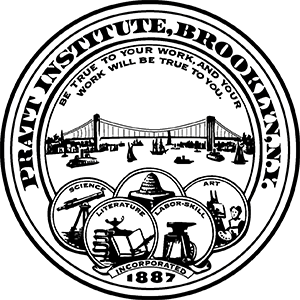
Pratt Institute is a private university with its main campus in Brooklyn, New York. It has a satellite campus in Manhattan and an extension campus in Utica, New York at the Munson-Williams-Proctor Arts Institute. The school was founded in 1887 with programs primarily in engineering, architecture, and fine arts. Comprising six schools, the institute is primarily known for its programs in architecture, graphic design, interior design, and industrial design.

Jacksonville University (JU) is a private university in Jacksonville, Florida, United States. Located in the city's Arlington district, the school was founded in 1934 as a two-year college and was known as Jacksonville Junior College until September 5, 1956, when it shifted focus to building four-year university degree programs and later graduated its first four-year degree candidates as Jacksonville University in June 1959. It is a member of the Independent Colleges and Universities of Florida and is accredited by the Southern Association of Colleges and Schools (SACS) and the Association to Advance Collegiate Schools of Business (AACSB). JU's student body currently represents more than 40 U.S. states and approximately 45 countries around the world. As a Division I institution, it fields 18 varsity athletics teams, known as the JU Dolphins, as well as intramural sports and clubs. Among the top majors declared by JU students are aviation management, biology, nursing, business, and marine science.
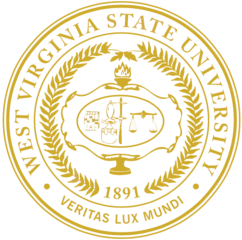
West Virginia State University (WVSU) is a public historically black, land-grant university in Institute, West Virginia. Founded in 1891 as the West Virginia Colored Institute, it is one of the original 19 land-grant colleges and universities established by the second Morrill Act of 1890, which evolved as a diverse and inclusive campus. Following desegregation, WVSU's student population slowly became more white than black. As of 2017, WVSU's student body was 75% white and only 8% African-American.

Franklin Pierce University is a private university in Rindge, New Hampshire, United States. It was founded as Franklin Pierce College in 1962, combining a liberal arts foundation with coursework for professional preparation.

Bluefield University is a private Baptist university in Bluefield, Virginia. It offers 22 majors and is accredited by the Southern Association of Colleges and Schools. The 82-acre (330,000 m2) campus is about 150 ft (46 m) from the state line between Virginia and West Virginia. It is affiliated with the Baptist General Association of Virginia. Bluefield University merged with Edward Via College of Osteopathic Medicine medical school system located at the campus of Virginia Tech in Blacksburg, Virginia.
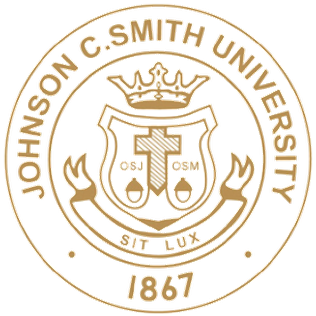
Johnson C. Smith University (JCSU) is a private historically black university in Charlotte, North Carolina. It is affiliated with the Presbyterian Church (USA) and accredited by the Southern Association of Colleges and Schools (SACS). The university awards Bachelor of Science, Bachelor of Arts, Bachelor of Social Work, and Master of Social Work degrees.

Lesley University is a private university in Cambridge, Massachusetts. It is accredited by the New England Commission of Higher Education. As of 2018–19 Lesley University enrolled 6,593 students.

The Campus of Drexel University is divided into four sites in Philadelphia, Pennsylvania—the University City Campus, the Center City Campus, the Queen Lane Campus, and the Academy of Natural Sciences. An additional location for the College of Medicine is under construction by Tower Health near Reading Hospital in West Reading, Pennsylvania. A branch campus in California—the Drexel University Sacramento Campus–closed in 2015.
The Richard C. Goodwin College of Professional Studies is a higher education college at Drexel University, Philadelphia.

Kennesaw State University (KSU) is a public research university in the state of Georgia with two campuses in the Atlanta metropolitan area, one in Kennesaw and the other in Marietta on a combined 581 acres (235 ha) of land. The school was founded in 1963 by the Georgia Board of Regents using local bonds and a federal space-grant during a time of major Georgia economic expansion after World War II. KSU also holds classes at the Cobb Galleria Centre, Dalton State College, and in Paulding County (Dallas). The total enrollment exceeds 45,000 students making KSU the third-largest university by enrollment in Georgia.
William Walsh Hagerty was a teacher, former NASA Adviser, and president of Drexel University.
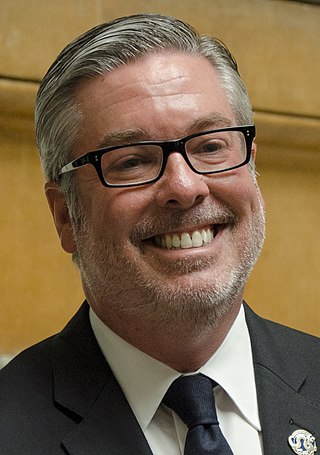
John Anderson Fry is an American academic administrator, currently serving as the president of Drexel University. Fry formerly served as president of Franklin & Marshall College.
Celestino "Chuck" Robert Pennoni is an American engineer and academic who currently serves as the chairman of Pennoni Associates Inc., a consulting engineering firm headquartered in Philadelphia. He has also served as interim president of Drexel University twice, from 1994 to 1995 and 2009 to 2010.
